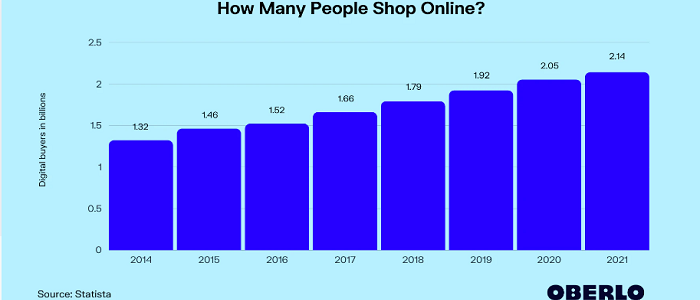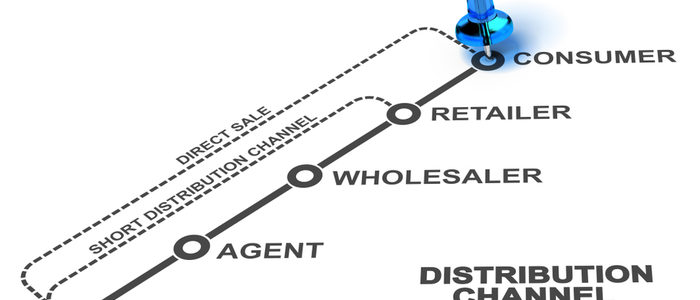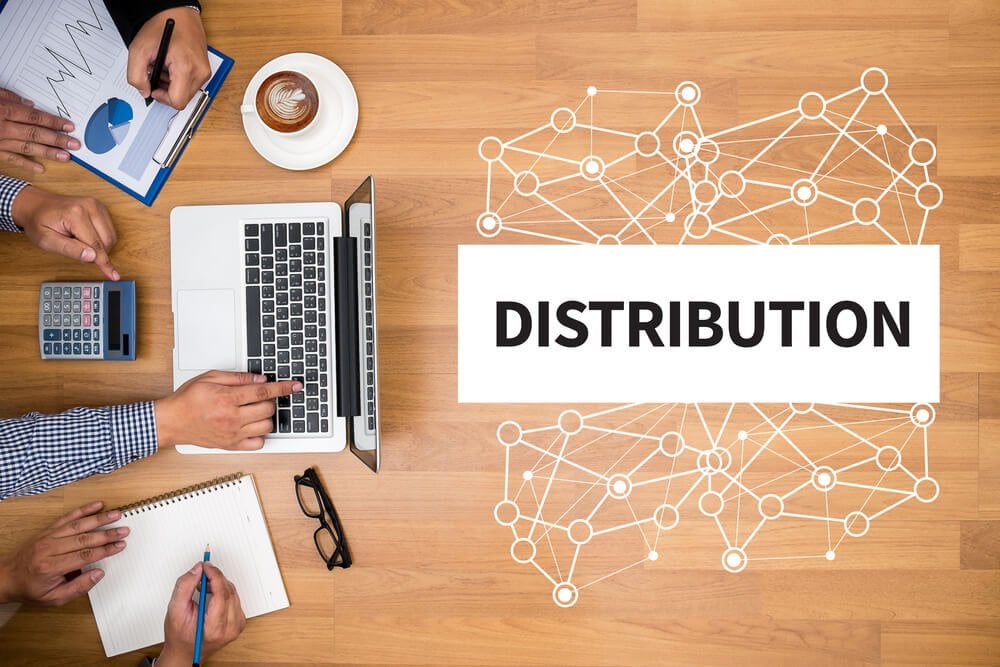
How to Write Perfect Paid Social Media Marketing Objectives (With Examples)
Having a marketing plan isn’t enough for success. You need strategic marketing objectives to help you set, plan for and achieve your business goals. And you need to have them not just for your overall marketing plan but also for specific portions, such as paid social media marketing.
This guide will offer you a detailed breakdown of what marketing objectives are, what are the best practices for creating effective marketing objectives, and a few examples of what successful marketing objectives look like.
We have also included tips, tricks, and strategies to make your marketing plan more efficient with tried and tested marketing objectives.
What Are Marketing Objectives?
Marketing objectives are a set of trackable, measurable, clearly defined goals to help you expand your business. These can include, but aren’t limited to:
- Profit-based goals: making sales
- Growth-based goals: increasing subscribers, fans, etc.
- Awareness-based goals: gaining unique visitors
Such marketing objectives often use a popular method of goal setting known as SMART. SMART stands for:
- Specific
- Measurable
- Attainable
- Relevant
- Timely
You should tailor your SMART goals to your unique situation, but here’s an example to get you restarted on your marketing objectives:
Smart Goal Structure
S – Specific: Visits, Leads, or Customers
Do you want to increase traffic, nurture traffic into leads, or convert leads into customers?
M – Measurable: Provide a Number
Decide on an exact number to measure and increase.
A – Attainable: Understand Benchmark
Research your past analytics to make sure the goal is realistic with your resources.
R – Relevant: Relates Back to Overall End Goal
Make sure each goal relates back to overall end goal.
T – Timely: Include a Time Frame
Pick a date that is realistic to reach your goal.
Why Is It Important to Set Paid Social Marketing Objectives?
When you launch a paid social media marketing campaign, it’s essential to start with solid marketing objectives so you create a strong strategy to meet or exceed your marketing goals.
For example, if you want to increase your newsletter subscribers, focus on building a robust email sequence and craft marketing content in a way that should convince your audience to hit subscribe. Having this marketing objective clarifies your key goals and can help you build an effective social media marketing strategy.
If you don’t have any marketing objectives, you may end up wasting time, money, and effort on the wrong marketing campaign (for example, increasing passive visitors instead of engaged subscribers).
To better direct your resources toward building successful ad campaigns, you need to understand the types of marketing objectives you can set and what they mean for your business.
10 Types of Paid Social Media Marketing Objectives
Marketing objectives are crucial to clarifying and meeting your business goals. This section is here to help you narrow down your choices and dig deeper into what each type of marketing objective looks like in practice.
1. Marketing Objectives to Increase Brand Awareness
This is one of the most common types of marketing objectives. No matter how great your business is, if customers don’t know about you, they can’t buy from you. That’s why paid social media marketing objectives aimed at increasing brand awareness often come first, especially for new business owners.
Like other marketing campaign metrics, these can be customized and measured according to your key business needs. For example, if you’re a new brand looking to increase brand awareness, you need to tailor your social ad campaigns to attract new visitors.
Here are a few examples of what a brand awareness-based marketing objective could look like:
- Increase social media visitors by 25 percent.
- Improve page visits by 50 percent.
- Increase the number of target demographic visitors by 20 percent.
The metrics to track these marketing objective plans are pretty straightforward. For instance, here is an example of keyword metrics tracked by Ubersuggest.
Your website’s analytics page will offer you all the details about your progress (or decline in growth) so you can adjust your marketing objectives and strategies accordingly.
If you notice you’re falling short of the goals too frequently, it may be a sign you’re setting unrealistic goals. Try to reduce the number and see what happens.
2. Marketing Objectives to Increase Repeat Visitors
Attracting new visitors isn’t enough; you must find a way to make them stay (and eventually convert). If you’re at that stage, you can create marketing objective plans to improve on-page retention and increase your number of regular visitors.
Here’s what that goal could look like:
- Improve click-through rates from existing visitors.
- Increase social media engagement among regular users.
- Reduce bounce rates to retain customers.
This graphic by CXL explains how to calculate your click-through rates.
Fortunately, most websites today track visitors, making it easy to see if your marketing objective plan is working. If you find a particular metric is hitting the mark, regroup and consider what needs to be fixed.
3. Marketing Objectives to Increase Subscribers
Once somebody starts visiting your page regularly, that’s a great time to ask them to subscribe to a premium level of whatever you offer. They’re already a free subscriber showing interest in your products, so they may be more likely to subscribe to your paid service than new users who don’t know or care about your business.
Marketing objectives to increase subscribers could look like:
- Increase subscribers by 15 percent over the next month.
- Reduce unsubscription rates by five percent over the next three months.
You can track these metrics from your subscription services’ analytics page to see what is working and what needs to change.
4. Marketing Objectives to Promote a New Product
When you launch a new product or service, you have an opportunity to create a timely and relevant paid social media marketing campaign.
If you’ve just launched (or are planning to launch) something new, here are a few marketing objectives you can set:
- Increase new product landing page visits to 100,000 per day.
- Boost social media engagement related to the new product by 40 percent.
- Sell 25 new units per day through organic traffic.
Such marketing objectives and strategies are often time-bound and only last for a few weeks or months, but you should track them like you would a long-term campaign to learn what works and what needs to be improved upon for the next time you run a short campaign.
5. Marketing Objectives to Increase Sales
Now that you’ve launched your new product and successfully promoted it, it’s time to focus on increasing sales. Most companies across several industries think of increasing sales when they discuss marketing.
Although marketing can serve several purposes, most businesses primarily use paid social media campaigns to boost sales, so this step is quite important.
If you’re at a stage where you’re prioritizing sales, here are a few examples of marketing objectives aimed at boosting sales:
- Increase conversion rates by three percent in the next three weeks.
- Connect with 25 influencers to increase social media sales.
- Increase affiliate sales by 12 percent in the next month.
These marketing objectives can be directly tracked by how many units or subscriptions you sell. We recommend keeping track of your results to know which marketing objectives and strategies work best for you.
6. Marketing Objectives to Increase Revenue
Even if your sales have increased, it doesn’t mean your revenue necessarily has. If you notice you’re not meeting your revenue goals, it’s time to devise new SMART goals, such as:
- Increase profit margins by 1.5 percent.
- Reduce marketing costs by two percent per month.
- Bring down customer acquisition cost to $5 per new buyer.
Here’s an example of how these marketing objectives can be tracked, explained through a graphic by Chorus.ai.
7. Marketing Objectives to Optimize the Conversion Funnel
Once you’ve set practical marketing objectives and begun working on your paid social media marketing campaign, you may notice the customers still aren’t converting. Maybe you’re attracting ample visitors, but your repeat customers are low. Perhaps you have a growing number of subscribers, but your customer acquisition cost is too high.
In these cases, it helps to set marketing objectives to optimize your conversion funnel. Here are a few examples:
- Identify and fix one weak spot in the conversion funnel per month.
- Increase conversion by 15 percent by spending a fixed sum on marketing.
- Reduce customer acquisition cost by three percent per month.
You can track these metrics by closely observing your conversion funnel. Note which step of your funnel is losing visitors and aim to fix that with one of these marketing objectives.
8. Marketing Objectives to Grow Your Digital Presence
Today, 2.14 billion people shop online, making digital marketing essential. If you have a successful brick-and-mortar business and want to expand your digital reach, this marketing objective could be right for you.
Here are a few helpful examples of what digital reach marketing objectives could look like:
- Post four blog posts per month to drive audience engagement.
- Increase social media followers by 25 percent.
- Reach 150 new users daily.
These marketing objectives can be tracked by recording and comparing your social reach.
Most social media platforms like Twitter and Instagram offer free analytics to help you understand how your audience interacts with your content. Use this data to adjust your marketing objectives and strategies.
9. Marketing Objectives to Reach International Audiences
If you’re launching a new product or service that could benefit users abroad, create a marketing objective to reach geo-targeted audiences. Once you’ve defined the demographics you wish to reach, you can set the following marketing objective plans:
- Reach users in 10 countries over the next six months.
- Convert three international users daily.
- Increase social engagement among international visitors.
Understanding international markets can be tricky, so you may have to experiment with marketing objectives and strategies before finding something that provides the best return on your investment.
10. Marketing Objectives to Increase On-site Time
Once you have an effective conversion funnel that meets your sales, revenue, and engagement goals, you can look for ways to increase each users’ on-site time. The more time somebody spends on your page, the more they’re likely to come back and buy something from you.
For this, you can set marketing objectives like:
- Reduce bounce rate by 4 percent every month.
- Increase user reading time up to 30 minutes per visitor.
You can track how long visitors stay on your page through your website’s built-in analytics tool. Measuring your marketing objectives solely through on-site time can be tricky, though, as many people leave their tabs open or are too busy to give their full attention to your page. So, we recommend you don’t focus on this objective too heavily unless you’ve completed all the others we discussed above.
How to Pick Your Paid Social Marketing Objectives
Now that you understand the 10 essential marketing objectives, it’s time to choose one for your company.
- Consider your business goals
When selecting a marketing objective, consider your business goals. Ask questions like: Do you need to increase sales, or should you prioritize social engagement?
- Get perspective
Consider the entire team’s perspectives before honing in on one goal.
- Narrow it down
Narrow your options to the top three choices you can work with.
- Test your goals
Start with one to see what works and what needs to change. If your goals aren’t supporting your overall growth plans, tweak and try again.
- Repeat the process with new objectives
Setting goals should be an on-going process, not a one-time deal.
Tips to Help You Meet Your Paid Social Marketing Objectives
If you want to increase the effectiveness of your paid social media marketing objectives, make sure you:
- Periodically check in with your team members to make sure everyone’s on the same page.
- Track your progress toward SMART goals to identify problems and possibilities for growth.
- Include external experts’ suggestions to improve your process.
FAQ about Social Media Marketing Objectives
This guide covered a ton, but you’ve still got questions. Here’s a quick FAQ to help you get started.
Can my business have more than one marketing objective?
How many marketing objectives you set depends on your business goals and planning capacity. Larger businesses with bigger teams may be able to plan and execute multiple marketing objectives and strategies at once. In comparison, newer businesses with smaller teams might perform better by working on one goal at a time.
Who should set the marketing objectives for a successful social media ad campaign?
When you launch a new social media ad campaign, involve everyone in the decisions about marketing objectives. The leaders and managers should specify the big-picture goals, while the marketing team can dig deeper into the details of how to execute your businesses’ marketing objective plans.
What are the most important marketing objectives?
Every company prioritizes different goals at different stages of its growth. Creating brand awareness and expanding your digital reach could be solid marketing objectives to aim for if you’re a new business. If you’re an established company, increasing sales and profits may better serve your key business goals.
What to do if my business isn’t meeting any marketing objectives?
If you notice your company is consistently falling short of your marketing objectives, it’s a sign warning you to change strategies. If you’re significantly behind your goals, it may be better to change your marketing objectives entirely. Track your goal metrics, see where your plan is failing, and set SMART marketing objectives to improve accordingly.
How often can you change your marketing objectives?
For your marketing objectives to succeed in accelerating your business growth, they have to be effective and profitable. If you notice you’re spending increasing time and effort trying to meet your goals without seeing great returns, reconsider your marketing objectives and perhaps swap them for new ones.
Social Media Marketing Objectives Conclusion
Setting SMART marketing objectives can truly change the way you reach your target audience and encourage them to do business with you.
You need to be especially SMART about your objectives when creating paid social media marketing campaigns, as you’re spending money regardless of how well things go.
Marketing objectives help clarify your message and simplify your goals while making them more effective in the long run.
Which marketing objective will you choose for your business today?
The post How to Write Perfect Paid Social Media Marketing Objectives (With Examples) appeared first on #1 SEO FOR SMALL BUSINESSES.
The post How to Write Perfect Paid Social Media Marketing Objectives (With Examples) appeared first on Business Marketplace Product Reviews.
The post How to Write Perfect Paid Social Media Marketing Objectives (With Examples) appeared first on #1 SEO FOR SMALL BUSINESSES.
The post How to Write Perfect Paid Social Media Marketing Objectives (With Examples) appeared first on Business Marketplace Product Reviews.
The post How to Write Perfect Paid Social Media Marketing Objectives (With Examples) appeared first on Buy It At A Bargain – Deals And Reviews.





